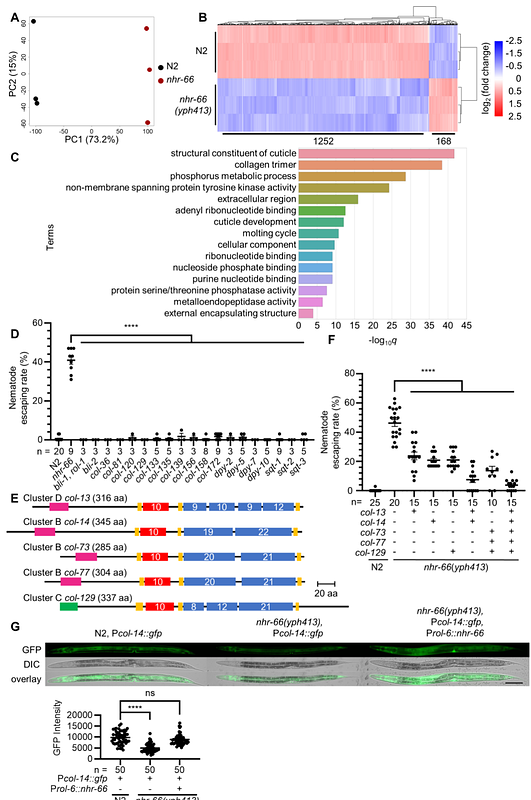Cuticular collagens mediate cross-kingdom predator-prey interactions between nematodes and trapping fungi

Cuticular collagens mediate cross-kingdom predator-prey interactions between nematodes and trapping fungi
Chang, H.-W.; Lin, H.-C.; Yang, C.-T.; Tay, R. J.; Chang, D.-M.; Tung, Y.-C.; Hsueh, Y.-P.
AbstractAdhesive interactions, mediated by specific molecular and structural mechanisms, are fundamental to host-pathogen and predator-prey relationships, driving evolutionary dynamics and ecological interactions. Here, we investigate the cellular and molecular basis of adhesion between the nematode Caenorhabditis elegans and its natural predator the nematode-trapping fungus Arthrobotrys oligospora, which employs specialized adhesive nets to capture its prey. Using forward genetic screens, we identified C. elegans mutants that escape fungal traps and revealed the nuclear hormone receptor NHR-66 as a key regulator of fungal-nematode adhesion. Loss-of-function mutations in nhr-66 conferred resistance to fungal trapping through the downregulation of a large subset of cuticular collagen genes. Restoring collagen gene expression in nhr-66 mutants abolished the escape phenotype, highlighting the essential role of these structural proteins in fungal-nematode adhesion. Furthermore, sequence analysis of natural C. elegans populations revealed no obvious loss-of-function variants in nhr-66, suggesting selective pressures exist that balance adhesion-mediated predation risk with physiological robustness. We observed that loss of nhr-66 function resulted in a trade-off of increased hypersensitivity to hypoosmotic stress and cuticular fragility. These findings underscore the pivotal role of structural proteins in shaping ecological interactions and the evolutionary arms race between predator and prey.